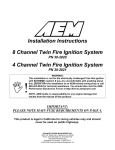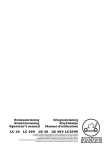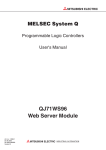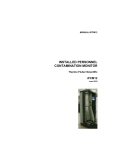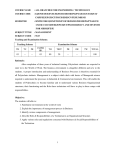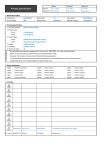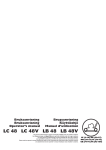Download SB-10 USER`S MANUAL
Transcript
- \ - - - - APPENDIX FUNCTION CODE REFERENCE Appendix A contains an entire listing of the codes used for every function performed by your printer. Many of these codes appear throughout the manual, but there are a number of additional functions that are described only in this appendix. So if you’d like to learn about all the capabilities of your printer, you can find them here. Each function is listed by name, followed by a short description. Since there are several different ways to access a function-through escape, control, decimal, and hexadecimal codes, and also through BASIC character strings-we have listed each of your possible choices. The codes are also cross-referenced to other related codes, and to the proper section of the manual. Here are a few tips on using the codes listed in Appendix A: <ESC> This symbol represents the escape function; for instructions on enabling this function, please consult your computer manual or software manual. n or “n” The “n” appears in the codes for user-selectable functions, such as horizontal tab settings. When you see “n”, you may substitute a number or value within the parameters given in the function’s description. CHR$ The character string command, CHR$, is used to “capture” a code entered when you are programming in BASIC. For details, please see Section 6. Always be sure to enter the code exactly as it appears in the listing. (If a letter is shown in uppercase, enter it in its uppercase form, and vice-versa.) - FONT STYLES AND PRINT CONTROLS n ;z$ECT THE DRAFT-QUALITY (DQ) CHARACTER This code switches the printer to the draft-quality character You can also access the DQ set by turning DIP switch 1-5 on. CODE: <ESC> HEX: 1B 35 DECIMAL: 27 53 BASIC: CHR$(27) CHR$(53) REFERENCE: < ESC > 4, Section 4 n ;E+ECT THE LETTER-QUALITY set. 5 - (LQ) CHARACTER This command switches the printer to the LQ character set. (You may also set LQ as the power-on default by turning DIP switch 1-5 off. See Appendix D.) CODE: <ESC> HEX 1B34 DECIMAL: 27 52 BASIC: CHR$(27) CHR$(52) REFERENCE: < ESC > 5, Section 4. 62 4 n SELECT AN INTERNATIONAL CHARACTER SET This command selects one of eight international character sets determined by thevalue of “n”, as shown below. (You can also select a particular International Character Set as a power-on default. To do this, please turn to Appendix D, “DIP Switches.“) CODE: <ESC> R “n” HEX: IB 52 “n” DECIMAL: 27 82 “n” BASIC: CHRS(27) CHR$(82) CHR$(n) USA=0 France=1 Germany=2 Sweden = 5 Italy = 6 Spain = 7 n SET THE PROPORTIONAL England=3 Denmark=4 SPACING In the letter-quality mode, this command causes all subsequent printing to be done in proportional spacing. CODE: <ESC> HEX: iB 70 01 DECIMAL: 27 112 1 BASIC: CHR$(27) CHR$(112) CHR$(l) REFERENCE: < ESC > P 0, Section4 P 1 63 n CANCEL PROPORTIONAL SPAClNG This command cancels the proportional print pitch to pica. CODE: <ESC> HEX: 1B 70 00 DECIMAL: 27 1120 BASIC: CHR$(27) CHR$(ll2) REFERENCE: < ESC > p 1, Section4 spacing and returns the PO CHR$(O) n SET THE PRINT PITCH TO PICA (IO CPI) In the draft mode, this command causes all subsequent printing to be done in pica type. This command also sets the maximum line length to 80 characters. You can select pica type as the power-on default by turning on DIP switch l-6. CODE: <ESC> HEX: 1B 50 DECIMAL: 27 80 BASIC: CHW(27) CHR$(80) REFERENCE: < ESC > M, Section 4. 64 P 1 n SET THE PRINT PITCH TO ELITE (12 CPI) In the draft mode, this command causes all subsequent printing to be done in elite type, and sets the maximum line length to 96 characters. You can select elite type as the power-on default by turning DIP switch l-6 off. CODE: <ESC> M HEX: lB4D DECIMAL: 27 77 BASIC: CHR$(27) CHRS(77) REFERENCE: < ESC > P, Section 4. n SET THE PRINT PITCH TO CONDENSED (76.7 CPI) In the draft mode, this command instructs the printer to print in the condensed pitch, and also sets the maximum line length to 132 characters. CODE: <ESC> -c SI > <SI> HEX: 1BOForOF DECIMAL: 27 15 or 15 BASIC: CHRS(27) CHR$(l5) REFERENCE: < ESC> P, < ESC> M, Section 4. or CHR$(15) w SELECT EXPANDED PRINT This instruction causes all subsequent printing to be in expanded type. The size of the type is determined by the pitch in use at the time the command is sent: PITCH Pica Elite Condensed CODE: <ESC> HEX: lB5701 NORMAL EXPANDED 10 cpi 12 cpi 16.7 cpi 5 cpi 6 cpi 8.3 cpi - W 1 - DECIMAL: 27 87 1 BASIC: CHW27) REFERENCE: < ESC > W 0. Section 4. CHR$(87) CHR$(l) 4 1 LINE EXPANDED PRINT Another code for expanded type activates this function for one line only. Here are the codes: - CODE: <ESC> <so> <SO> HEX: 1B OE or OE DECIMAL: 27 14 or 14 BASIC: CHR$(27) CHR$(14) or CHR$(14) REFERENCE: <ESC> - 66 W 1. <ESC> W0 n CANCEL EXPANDED PRINT Resets the print size to the pitch in use before expanded began. CODE: <ESC> HEX: lB5700 DECIMAL: 27 87 0 BASIC: CHR$(27) CHR$(87) CHR$(O) REFERENCE: < ESC > W 1, Section 4. W0 n SELECT DOUBLE-STRIKE After this command double-strike mode. print PRINTING is sent, all characters CODE: <ESC> HEX: lB47 DECIMAL: 27 71 BASIC: CHR$(27) CHR$(71) REFERENCE: < ESC > H, Section 4. will be printed in the G w CANCEL DOUBLE-STRIKE PRlNTlNG This command returns printer to normal printing, double-strike mode. CODE: <ESC> HEX: lB48 DECIMAL: 27 72 BASIC: CHR$(27) CHR$(72) REFERENCE: < ESC > G, Section 4 canceling the H 67 n SELECT EMPHASIZED PRINTING This command causes all subsequent the emphasized mode. CODE: <ESC> HEX: lB45 DECIMAL: 27 69 BASIC: CHR$(27) CHR!$(69) REFERENCE: < ESC > F. Section 4. characters to be printed in E w CANCEL EMPHASIZED PRINTING Returns normal printing, canceling CODE: <ESC> HEX: lB46 DECIMAL: 27 70 BASIC: CHR$(27) CHR$(70) REFERENCE: < ESC > E. Section 4. the emphasized print mode. F n SELECT UNDERLINING After this command is given, all characters this function is canceled. CODE: <ESC> HEX: lB2DOl DECIMAL: 27 45 1 BASIC: CHRS(27) CHR$(45) CHR$(l) REFERENCE: < ESC > - 0, Section 4. 68 - 1 will be underlined until n CANCEL UNDERLINING After this code is sent, underlining will be canceled. CODE: <ESC> -0 HEX: lB2DOO DECIMAL: 27 45 0 BASIC: CHR!$(27) CHR$(45) CHR$(O) REFERENCE: < ESC > - 1, Section 4. w SELECT SUPERSCRIPTS With this command, all subsequent characters superscripts until this function is canceled. CODE: <ESC> HEX: lB5300 DECIMAL: 27 83 0 BASIC: CHR$(27) CHR$(83) CHR$(O) REFERENCE: < ESC > S 1, < ESC > T, Section 5. are printed as SO n SELECT SUBSCRIPTS This code causes all subsequent characters subscript level, until this function is canceled. CODE: <ESC> HEX: lB5301 DECIMAL: 27 83 1 BASIC: CHR$(27) CHR$(83) CHR$(l) REFERENCE: < ESC> S 0, <ESC> to be printed at the S1 T, Section 5. n CANCEL SUPERSCRIPTS AND SUBSCRIPTS This command is used to cancel either super- or subscript printing. CODE: <ESC> HEX: lB54 DECIMAL: 27 84 BASIC: CHW(27) CHR$(84) REFERENCE: < ESC > S 0, < ESC > S 1, Section 5. T FORMATTING - CONTROLS n SELECT UN/DIRECTIONAL PRINTING This command causes all subsequent lines to be printed in the unidirectional mode, until canceled. Unidirectional printing is useful in printing tables or charts, since it ensures that vertical columns of characters will be in alignment in the draft mode. CODE: <ESC> HEX: 1B 55 01 DECIMAL: 27 85 1 BASIC: CHR$(27) CHR$(85) CHR$(l) REFERENCE: <ESC> U1 U 0, <ESC> <. A similar command can be used to activate unidirectional for one line only. Here are the codes: CODE: <ESC> HEX: lB3C DECIMAL: 27 60 BASIC: CHR$(27) “ < ” REFERENCE: <ESC> 70 - printing < U 0, <ESC> U 1. - n CANCEL UNIDIRECTIONAL PRINTING This command cancels unidirectional printing, printer to its standard bidirectional printing. CODE: <ESC> HEX: lB5500 DECIMAL: 27 85 0 BASIC: CHR$(27) CHR$(85) CHR$(O) REFERENCE: <ESC> n ADVANCE returning the U0 U 1. THE PAPER ONE LINE (LINE FEED) The actual distance advanced by the line feed is set either through DIP Switch l-3 or through other line spacing methods outlined in Section 5. CODE: <LF> HEX: OA DECIMAL: 10 BASIC: CHR$(lO) REFERENCE: <ESC> 0, <ESC> 1, <ESC> 2, <ESC> a “n”, < ESC> A “n”, < ESC> 3 “n”, <ESC> J “n”, < ESC > j “n”, Section 5. 71 n REVERSE THE PAPER ONE LINE (REVERSE LINE FEED) This command causes the printer to reverse the paper one line. The distance reversed by this instruction is set either through DIP switch l-3 or through other line spacing methods outlined in Section 5. CODE: <ESC> HEX: IBOA DECIMAL: 27 10 BASIC: CHR$(27) CHR$(lO) REFERENCE: <ESC> 0, cESC> 1, <ESC> 2, <ESC> a “n”, -cESC> A “n”, cESC> 3 “n”, <ESC> J “n”, < ESC > j “n”, Section 5. n CHANGE <LF> - - THE LINE SPACING TO l/8 IPICH This instructs your printer to print 8 lines per inch. (You can also select 1/8th inch line spacing by turning off DIP switch l-3.) CODE: <ESC> HEX: lB30 DECIMAL: 27 48 BASIC: CHRS(27) CHR$(48) REFERENCE: <ESC> 1, <ESC> 2, <ESC> a “n”, <ESC> A “n”, <ESC> 3 “n”, <ESC> < ESC > j “n”, Section 5. 72 0 - J “n”, W CHANGE THE LINE SPACING TO l/10 INCH After this instruction is given, all subsequent line feeds will be set to l/lOth inch, or 10 lines per inch, as described in Section 5. CODE: <ESC> HEX: lB31 DECIMAL: 27 49 BASIC: CHR$(27) CHR$(49) REFERENCE: <ESC> 0, <ESC> 2, <ESC> a “n”, <EsC> A “n”, <ESC> 3 “n”, <ESC> < ESC > j “n”, Section 5. n CHANGE 1 J “n”, THE LINE SPACING TO l/6 INCH This command returns the line spacing on the printer to 1/6th inch, which is the American standard. You can also select 1/6th inch line spacing as the power-on default by turning DIP switch l-3 on. CODE: <ESC> 2 HEX: lB32 DECIMAL: 27 50 BASIC: CHR$(27) CHR$(50) REFERENCE: <ESC> 0, <ESC> 1, <ESC> <&SC> 3 “n”, <ESC> J “n”, < ESC > j “n”, Section 5. A”n”, n ;yHNGE THE LINE SPACING TO nI60THS OF AN This command allows you to select the line spacing you want, to n/60ths of an inch. You may choose a value for “n” between 0 and 255. CODE: <ESC> HEX: 1B 41 “n” A “t-t” - DECIMAL: 27 65 “n” BASIC: CHR$(27) CHR$(65) CHR$(n) REFERENCE: <ESC> 0, <ESC> 1, cESC> 2, <ESC> a “n”, <ESC> 3 “n”, <ESC> J “n”, <ESC> j ‘In”, Section 5. -.-.- n CHANGE THE LINE SPACING - TO nl120THS OF AN INCH This command allows you to select the line spacing you want, to nll20ths of an inch. You may choose a value for “n” between 0 and 255. 3 “n” CODE: <ESC> HEX: 1B 33 “n” DECIMAL: 27 51 “n” BASIC: CHR$(27) CHR$(51) CHR$(n) REFERENCE: <ESC> 0, <ESC> 1, <ESC> 2, <ESC> a “n”, < ESC > A “n”, < ESC > J “n”, < ESC > j ‘In”, Section 5. - - -- - - 74 n SEND A ONE-TIME-ONLY n/720THS OF AN INCH LINE FEED OF This command causes the printer to advance the paper n/l 20ths of an inch, for the remainder of the line. It does not change the current value of the line spacing, and it does not cause a carriage return. You may substitute for “n” any number between 0 and 255. J “n” CODE: <ESC> HEX: 1B 4A “n” L DECIMAL: 27 74 “n” i BASIC: CHRs(27) CHR$(74) CHR$(n) c REFERENCE: <ESC> c <ESC> c. 0, -cESC> 1, <ESC> 2, <ESC> a “n”, A “n”, <ESC> 3 “n”, <ESC> j “n”. l SEND A ONE-TIME-ONLY OF nll20THS OF AN INCH REVERSE LINE FEED You can use this command to reverse the paper nll20ths of an inch. It does not change the current value of the line spacing, and it does not cause a carriage return. You may choose a value between 0 and 255. CODE: < ESC > j “n” HEX: IB 6A “n” DECIMAL: 27 106 “n” BASIC: CHR$(27) CHR$(106) CHR$(n) REFERENCE: <ESC> <ESC> . L. - L. 0, <ESC> 1, <ESC> 2, <ESC> a “r-t”, A “n”, <ESC> 3 “n”, <ESC> J “n”. 75 n ADVANCE PAPER TO TOP OF NEXT PAGE (FORM FEED) The length of a page selected by the form feed is set either through DIP switch l-2 or through various codes listed below. CODE: <FF> HEX: oc DECIMAL: 12 t BASIC: CHR$(12) i REFERENCE: <ESC> - C “n”, <ESC> C 0 “n” n REVERSE PAPER TO TOP OF CURRENT PRINTING PAGE (REVERSE FORM FEED) This command causes the printer to reverse the paper to the top line of the page. , I I i i CODE: <ESC> <FF> HEX: IBOC DECIMAL: 27 12 BASIC: CHR$(27) CHR$( 12) REFERENCE: <ESC > C “n”, <ESC> C 0 “n”. - n SET PAGE LENGTH TO “n” LINES This command sets the length of all subsequent pages to “n” lines. You may choose for “n” any whole number between 1 and 127. - C “n” CODE: <ESC> HEX: 1B 43 “n” DECIMAL: 27 67 “n” BASIC: CHRS(27) CHR$(67) CHR$(n) REFERENCE: < ESC > C 0 “‘n”, Section 5. - 76 W SET PAGE LENGTH TO “n” INCHES When you send thiscommand, you set the length of all subsequent pages to “n” inches. You may choose for “n” any whole number value between 1 and 32. (You may also select a power-on default form length of 11 inches or 12 inches by setting DIP switch l-2.) i L. C 0 “n” CODE: <ESC> HEX: 1B 43 00 “n” DECIMAL: 27 67 0 “n” BASIC: CHR$(27) CHR$(67) CHR$(O) CHR$(n) REFERENCE: < ESC > C “n”, Section 5. n SET TOP MARGIN This command allows you to redefine the top margin of the page. For “n”, you may enter any number between 1 and 16. r “n” CODE: <ESC> 1 HEX: 1B 72 “n” . DECIMAL: 27 114 “n” BASIC: CHR$(27) CHR$(114) CHR$(n) REFERENCE: < ESC > N “n”, Section 5. n SET THE BOTTOM MARGlN With this command, you set the bottom margin of the page to “n” lines. The printer automatically executes a form feed when the number of lines left on a page is equal to the “r-r” value you choose. You may enter for “n” any value between 1 and 127. CODE: <ESC> N “n” HEX: 1B 4E “n” DECIMAL: 27 78 “n” BASIC: CHR$(27) CHR$(78) CHR!$(n) REFERENCE: < ESC > 0, Section 5. n CANCEL TOP AND BOTTOM --. 1 - - This command cancels - MARGINS both the top margin set by <ESC > r N “n”. “n” and the bottom margin set by <ESC> CODE: <ESC> 0 HEX: 1B4F DECIMAL: 27 79 BASIC: CHR$(27) CHR$(79) REFERENCE: < ESC > r “n”, < ESC > N “n”, Section 5. - -- a SET VERTICAL TAB POSITIONS This command cancels all previous vertical tab positions and sets those defined at lines “nl","n2", etc. The maximum number of vertical tab positions you can set is 12. This instruction must be terminated with the “NUL” code, CHR$(O). Each vertical tab must be specified in ascending order. "n2" ...O <ESC> HEX: IB 42 "nl " “n2" .. 0 DECIMAL: 2766 BASIC: CHR$(27) CHR$(66) CHR$(nl) REFERENCE: <VT > , Section 5. n ADVANCE . B "nl" CODE: "nl " "n2" . .. 0 TO NEXT VERTICAL CHR$(n2) ... CHR$(O) TAB POSITION This command causes to the paper to advance to the next vertical tab position or the top of the page, whichever comes first. Thevertical tab positions are set automatically at power-on to lines 6, 12, 18, 24, 30, 36, 42, 48, 54, and 60. CODE: <VT> HEX: OB DECIMAL: 11 BASIC: CHR$(ll) REFERENCE: <ESC> B "nl" Section 5. “n2" 0, < ESC> a ‘In", n ADVANCE THE PAPER “n” LINES This command causes the paper to advance "n" lines, but does not change any values of the vertical tab positions. You may choose any number between 1 and 255 for "n". / / i r CODE: < ESC > a “n” HEX: 1B 61 “n” DECIMAL: 2797 "n" BASIC: CHW(27) REFERENCE: <ESC> - CHR$(97) CHR$(n) B “nl" “n2" ... 0. - m SET VERTICAL FORM UNIT (VFU) The vertical form unit command can be used to help you print multipage forms. If each page of the form has different vertical tab positions, the tabs can be set in “channels”. There are 7 channels which are numbered from 0 to 6, you can program the tab positions for up to 7 different pages of a form. In the example below the variable "n" is used to select which channel will be used. The variables ‘dm, 11,“m2”, “m3”... are used to define the vertical tab positions for a given channel. The command must be terminated with a nul code <O> to signify the end of data for that command. The maximum number of tab positions for a channel is 12. CODE: <US HEX: 1F "n" “ml " "m2" ... 00 DECIMAL: 31 "n" "ml" ...O BASIC: CHR$(31) CHR$(n) CHR$(ml) CHR$(O) REFERENCE: < ESC > B “nl" 80 > "n" "ml" "m2" "m2" "n2" .0 CHR$(m2) ...O. <ESC> / n -. n SELECT VERTICAL FORM UNIT (VFU) CHANNEL This command causes the printer to execute all subsequent vertical tabs in accordance with the format you specified for VFU channel “n”. CODE: < ESC > I "n" HEX: 19 2F "n" DECIMAL: 2747 "n" BASIC: CHRS(27) CHR$(47) CHR!$(n) REFERENCE: <US> “n" “ml" "m2" ...0 <ESC> B “t-t?" "n2" ...O n CARRIAGE RETURN This command returns the print head to its “home” position at the left margin. CODE: <CR> HEX: OD DECIMAL: 13 BASIC: CHR$(13) REFERENCE: Appendix D. 87 n SET THE LEFT MARGIN You can use this instruction to set the left printing margin of your page. This margin will be the “home” position of all subsequent carriage returns until it is canceled or changed. The power-on default for this position is 1. The value for “n” must be between 1 and 155. The maximum print position for pica type is 80 for elite, 96 and for condensed type, 132. CODE: < ESC > I “n” HEX: 19 6C “n” DECIMAL: 27 108 “n” BASIC: CHR$(27) CHW(108) REFERENCE: < ESC > Q “n”, Section 5. - - CHR$(n) - n SET THE RIGHT MARGIN Use this command to set the right printing margin on the page. Any attempt to print beyond your chosen right-hand margin will cause an automatic carriage return and line feed. Choose any value between 1 and 155. Q “n” CODE: <ESC> HEX: 19 51 “n” DECIMAL: 27 81 “n” BASIC: CHR$(27) CHR$(81) CHR$(n) REFERENCE: < ESC > I “n”, Section 5. - -. - 82 w SET HORIZONTAL TAB POSITIONS With this command, you cancel all previously set horizontal tabs, and set new positions at lines "nl ” ,"n2", etc. There are255 available tab positions. Use 0 to terminate this command. Each horizontal tab must be between 1 and 255, and must be specified in ascending order. CODE: < ESC > D "n?" "n2" HEX: 00 19 44 "nl " "n2" ,.. DECIMAL: 27 68 "nl" "n2" ...0 BASIC: CHR$(27) CHR$(68) CHR$(nl) CHW(O) REFERENCE: < ESC > b "n", < HT >, Section 5. w ADVANCE 0 TO NEXT HORIZONTAL CHR$(n2) TAB This command moves the print head to the next available horizontal tab position. Horizontal tabs are set at power-on to positions 9, 17, 25, 33, etc., to the maximum print position. CODE: <HT> HEX: 09 DECIMAL: 9 BASIC: CHRS(9) REFERENCE: <ESC> D “nl” "n2" ,., 0, Section 5. I SKIP HORIZONTAL TAB POSITIONS Causes the print head to advance "n" print positions to the right. It does not, however, change the current values of the horizontal tabs. You may choose any number for “n" between 1 and 255. b "n" CODE: <ESC> HEX: 19 62 "n" DECIMAL: 2798 “n" - BASIC: CHR$(27) CHR$(98) CHR$(n) - REFERENCE: <ESC> -- D "r-t?" "n2" ...O. n MOVE THE PRINT HEAD BACK (BACKSPACE) - ONE POSITION - Shifts the print head one column to the left. This command can be used to overstrike characters. CODE: CBS> HEX: 08 DECIMAL: 8 BASIC: CHRS(8) REFERENCE: Section 2. - 84 n PRINT 8-BIT GRAPHICS . This command selects the 8-bit graphics mode. Please see Appendix F for a detailed explanation of this mode. L.. CODE: -cESC> HEX: 19 59 “nl” “r-12” “ml” “m2” ... DECIMAL: 27 89 “nl” “n2” “ml” “m2” .... BASIC: CHR$(27) CHR$(89) CHR$(nl) CHR$(m2)... . REFERENCE: Appendix Y “t-11” “n2” “ml” “m2” ... . CHR$(n2) CHR$(ml) F. n PRINT 16-BIT GRAPHICS This command switches the printer into its 16-bit graphics mode. Please see Appendix F for more on the printer’s graphics modes. I “r-17” “n2” “ml” “m2” CODE: <ESC> HEX: 19 49 “nl” “n2” “ml” “m2” DECIMAL: 27 73 “nl” “n2” “ml” “m2” BASIC: CHR$(27) CHRW3) CHR$(m2) ... REFERENCE: Appendix CHR$(nl) . CHR$(n2) CHR$(ml) F. 85 - n PRINT 24-BIT GRAPHICS - With this command, you can print high-resolution Please see Appendix F for details. 24-bit graphics. V “nl” “n2” “ml” “m2” .... CODE: <ESC> HEX: 19 56 “nl” “n2” “ml” “m2” ... . DECIMAL: 27 86 “nl” “n2” “ml” “m2” ... BASIC: CHR$(27) CHR$(86) CHR$(n 7) CHR$(n2) CHR$(m CHR$(m2)... .- 1) - REFERENCE: APPENDIX F. - W PRINT 8X3-BIT GRAPHICS This command enables the 8x3-bit graphics mode, which prints about three times as dense and three times as wide as simple 8-bit graphics. Please see Appendix F for details. - K “nl” “n2” “ml” “m2” CODE: <ESC> HEX: 19 49 “nl” “n2” “ml” “m2” DECIMAL: 27 75 “nl” “n2” “ml” “m2” BASIC: CHRS(27) CHR$(75) CHR$(nj) CHR$(m2)... REFERENCE: Appendix -- CHR$(n2) CHR$(mj) - F. - - 86 H SELECT MASTER PRINT MODE . * * L L With this command, you can select one of 16 unique print mode combinations shown in Table A-l, for the value of “n”. (You may choose for “r-t” any number between 0 and 255.) This command precedes other commands (such as < ESC > G, etc.) which set the print mode. “n” CODE: <ESC>! HEX: 1921 “n” DECIMAL: 27 33 “n” BASIC: CHR$(27) CHR$(33) CHR$(n) REFERENCE: <ESC> <SIB, < ESC > <SC >, <ESC> <ESC> F, <ESC> G, <ESC> t-i, <ESC’ <ESC> P, <ESC> W 0, <ESC> W 1. E, M, Table A-l. PITCH Pica Elite Condensed Expanded Pica Expanded Elite Expanded Condensed 88 Options for the master print mode. NORMAL EMPHASIZED DOUBLE-STRIKE DOUBLE-STRIKE & EMPHASIZED 0, 2, 64, 8, 10, 12, 66, 128, 130, 14, 72, 74, 192, 194 76, 78, 136, 138, 140, 142, 200, 202, 204, 206 16, 18, 80, 24, 26, 28, 82,144,146, 30, 88, 90, 208,210 92, 94, 152, 154, 156, 158; 216, 218, 220, 222 1, 3, 5, 7, 9, 11, 13, 15, 65, 67, 69, 71, 73, 75, 77, 79, 129, 131, 133, 135, 137, 139, 141, 143, 193, 195, 197, 199, 201, 203, 205, 207 17, 19, 21, 23, 25, 27, 29, 31, 81, 83, 85, 87, 89, 91, 93, 95,145,147, 149,151,153, 155,157,159, 209,211,213, 215,217,219, 221,223 Elitetakes precedence over Emphasized. 4, 6, 68, Emphasized 70, 132, 134, takes 196,198 precedence over condensed. Elitetakes precedence over Emphasized. 20, 22, 84, Emphasized 86,148,150, takes 212,214 precedence over condensed. 48, 50, 112, 56, 58, 60 114,176,178, 62, 120, 122 240,242 124, 126, 184 186, 188, 190 248, 250, 252 254 33, 35, 37, 39, 41, 43, 45, 47, 97, 99, 101, 103, 105, 107, 109, 111, 161, 163, 165, 167, 169, 171, 173, 175, 225, 227, 229, 231, 233, 235, 237, 239 49, 51, 53, 55, 57, 59, 61, 63,113, 115,117,119, 121,123,125, 127,177,179, 181,183,185, 187,189,191, 241,243,245, 247,249,251, 253,255 36, 38, 100, Emphasized 102, 164, 166, takes 228,230 precedence over condensed. -._ - 32, 34, 96, 40, 42, 44, 98, 160, 162, 46, 104, 106, 224, 226 108, 110, 168, 170, 172, 174, 232, 234, 236, 238 Elitetakes precedence over Emphasized. - Elitetakes precedence over Emphasized. 52, 54,116, Emphasized 118,180,182, takes 244,246 precedence over condensed. -- - - - n DEFINE MACRO INSTRUCTION This command cancels any existing macro instruction and replaces it with a new macro defined by you. Your maximum number of codes in this instruction is 16. The last character in each of the codes below is used to terminate the command. CODE: <ESC> + ...<RS> HEX: 192B...lE DECIMAL: 27 43 BASIC: CHRW) REFERENCE: < ESC > ?, Section 4 30 CHR$(43) ... CHR$(30) n EXECUTE MACRO This command instruction. .. INSTRUCTION is used to execute your previously defined macro CODE: <ESC> ? HEX: lB3F DECIMAL: 27 63 BASIC: CHR$(27) CHR$(63) REFERENCE: < ESC > + < RS>, Section 4. a ;cE;L<HE VALUE OF THE 8TH DATA BIT TO LOGThis command allows users with a 7-bit interface to access those characters whose ASCII code is greater than 127. CODE: <ESC> > HEX: lB3E DECIMAL: 27 62 BASIC: CHR$(27) CHR$(62) REFERENCE: <ESC> #,<ESC> =. 89 n scELLTHE VALUE OF THE 8TH DATA BIT TO LOGThis command causes the printer to ignore the eighth data bit. CODE: <ESC> = HEX: lB3D DECIMAL: 27 61 BASIC: CHR$(27) CHR$(Gl) REFERENCE: <ESC> - - n ;CCEPT >, <ESC> #. THE VALUE OF THE 8TH DATA BIT AS - - This command cancels either setting of the 8th data bit, causing the printer to use the value of the eighth data bit that is sent from the computer. CODE: <ESC> HEX: 1923 DECIMAL: 27 35 BASIC: CHR$(27) CHR$(35) REFERENCE: <ESC> # >, <ESC> =. n DELETE THE LAST CHARACTER - SENT This command deletes the last character received by the printer; it is ignored if the last character received has already been printed, or if the last character received was all or part of a function code. CODE: <DEL> HEX: 7F DECIMAL: 127 BASIC: CHR$(127) 90 I ~~~ n SET PRINTER OFF-LINE This command causes the printer to set itself off-line, disregarding all subsequent characters and function codes (with the exception of < DC1 >, which returns the printer to its on-line state). When the ON LINE lamp on the printer is off, the printer will not respond to <DCl>. ! L * CODE: <DC3> k HEX: 13 * DECIMAL: 19 BASIC: CHR$(lS) L REFERENCE: < DC1 > b n SET THE PRINTER ON-LINE li I * L . This code resets the printer to an on-line state, allowing it to again receive and process characters and function codes. The ON LINE lamp must be lit for the printer to respond to this code. CODE: <DCi> HEX: 11 DECIMAL: 17 BASIC: CHR$(17) REFERENCE: < DC3>. n SOUND THE PRINTER BELL This command causes the printer tone to sound for approximately 1/4th second. CODE: <BEL> HEX: 07 DECIMAL: 7 BASIC: CHRW) REFERENCE: <ESC> y 1, <ESC> y0. 91 n DISABLE THE PRINTER BELL This command causes the printer to ignore the < BEL > code. CODE: <ESC> y0 HEX: lB7900 DECIMAL: 27 121 0 BASIC: CHR$(27) CHR$(121) CHR$(O) REFERENCE: <ESC> n ENABLE PRINTER BELL y 1, <BEL> This command causes the printer to respond to the < BEL > code by sounding the printer tone. CODE: <ESC> HEX: lB7901 DECIMAL: 27 121 1 BASIC: CHR$(27) CHR$(121) CHR$(l) REFERENCE: <ESC> - y1 y0, <BEL>. n DISABLE PAPER-OUT DETECTOR This command causes the printer to disregard the signal sent by the paper-out detector. The paper-out signal normally sounds the printer bell and stops printing until paper is inserted and the printer is reset. CODE: <ESC> HEX: 1838 DECIMAL: 27 56 BASIC: CHR$(27) CHR$(56) REFERENCE: <ESC> 92 8 _ - - 9. - n ENABLE PAPER-OUT DETECTOR This command restores the function of the paper-out CODE: <ESC> HEX: lB39 DECIMAL: 27 57 BASIC: CHR$(27) CHR$(57) REFERENCE: < ESC> 8. n CANCEL TEXT IN PRINT BUFFER 9 This command cancels all the data previously buffer of your printer. CODE: <CAN> HEX: 18 DECIMAL: 24 BASIC: CHR$(24) REFERENCE: < DEL > n INITIALIZE detector. stored in the print PRINTER This command is used to reinitialize the printer. The print buffer is cleared and the form length, character pitch, character set, line feed pitch, and international character set are all reset to the values defined by their respective DIP switches. The main difference between this code and simply turning the printer off isthat download character RAM is preserved with this command. CODE: <ESC> @ HEX: lB40 DECIMAL: 27 64 BASIC: CHR$(27) CHR$(64) b n SELECT INCREMENTAL MODE This command causes the printer to print each character as it is typed in. If the data is input at intervals of less than approximately 0.1 second, printout will be performed continuously. This is useful for completing forms, or whenever you need to print a character on command. CODE: <ESC> i1 HEX: lB6901 DECIMAL .. 27 105 1 BASIC: CHR$(27) CHR$(105) CHR$(l) REFERENCE: < ESC > i 0. n CANCEL INCREMENTAL MODE This command cancels incremental mode. CODE: <ESC> i0 HEX: lB6900 DECIMAL: 27 105 0 BASIC: CHR$(27) CHR$(105) CHR$(O) REFERENCE: < ESC > i 1. - *********** - ; :‘. ” ‘<,” : -‘.‘. .’ _. -: APPENDIX INSTALLING THE PRINTER INTO YOUR WORD PROCESSING PACKAGE In Section 1, we listed the basic information you will need to know when you install the printer into your word processing package. Now let’s look at a typical installation for WordStar, one of the first-and still the most popular-word processors made for the personal computer. If you aren’t planning to use WordStar as your word processor, you can still benefit by reading the following step-by-step description-it will take you through a typical “custom installation”, giving you valuable information you can use with any word processor. To get to the WordStar installation program, insert the disk into your computer as you normally do; at the A >, type the word WINSTALL. The installation program will appear, prompting you with a few preliminary questions (such as “Do you want to continue with this installation?“; answer these questions, and when you get to the query “Name of file to install”, enter WSCOM and press the return key three times. n THE INSTALLATION MENU The next menu to appear on your screen will be the WordStar Installation Menu, with several choices, including “Menu of Printers” and “Custom Installation of Printers.” As we said, you may want to look at the menu of printers and experiment with any of the dot matrix printers listed. However, you’ll get your best results by using WordStar’s “Custom Installation of Printers.” This choice requires some detailed information about your printer, which you’ll find in the following pages. When you choose “Custom Installation of Printers,” you are immediately given a submenu called the Printer Installation Menu. The Printer Installation Menu contains a separate entry for each category of information you will provide concerning the printer. From this menu your choice is “Automatic Installation for Specialty Printers,” which will lead you through each individual category under in addition, it will lead you through the the heading “All printers”; categories for “Specialty printers only”. Printer Name Your first category is an easy one-the optional “Printer Name.” If this is your first installation of WordStar, there will be a blank space next to the words “Current name is:“. Press C to change this status, and type in your printer’s name. Printer Initialization This important category tells WordStar the exact code needed to communicate with your printer. The sequence is empty,” so press C to change this status; then enter the hexadecimal numbers in the exact order shown here (press key when you see the word < return >): OD 1B 40 1B 34 1B 1E 09 1B 1F OD 00 00 00 00 00 <return < return < return < return < return <return> < return <return <return> <return> <return <return <return <return <return < return sequence “currently following the return > > > > > > > > > > > > > < return > When you’re finished entering the initialization < return > to confirm your choices. code, press Y or Printer De-initialization You will automatically advance to this category when you have finished entering the information concerning printer initialization. No de-initialization code is needed for your printer, so just press < return > to advance to the next category. Overprinting The “Overprinting” category will want to know how your printer backspaces. Press C and, from a list of three choices, choose “backspacing standard printer”; then press Y or <return > to confirm your choice. Next you will be prompted to enter the “backspacing code sequence.” Press C, then type in “8h”, and finish by pressing the return key. Boldfacing Your next category, “Boldfacing”, informs you directly of the correct number of strikes for boldface printing: 2. So, press C, 2, and <return >. Communications protocol If you are using the parallel interface, no protocol is necessary for this printer. (For the code sequences used in the various serial interface protocols, please see Appendix H.) Printer driver If you have chosen “Primary list device” as your printer driver, then the correct codes for that device will already be entered in this category, and no further input is necessary on your part. Press < return > to exit this category. Ribbon selection This category also does not apply to your printer, so please press < return > to exit. Vertical motion and Horizontal motion When you chose “Automatic Installation for Specialty Printers,” the installation program automatically entered the necessary codes for these two categories. No further input is necessary, so just press <return > to pass through them unchanged. Print modes This category asks for the code sequences of the backward and forward print modes, You should also pass through these sequences unchanged. Print phantom characters This category does not apply to your printer , so press <return > to pass through it. You will be returned to the Printer Installation Menu, and may now enter the special features of the printer that you’ll want to use on a regular basis: emphasized, expanded, and underlined printing, or any of the other features you’ve iearned about in this book. 97 n USER FUNCTIONS Once you have entered them, you’ll be able to call up each of these features from the WordStar Print Menu, under the heading “User Patches. ” You can enter these features into WordStar by choosing theoption “User-defined functions” from the Printer Installation Menu; “User function #lo will appear on your screen. WordStar allows you four separate “user functions,” each of which represents a feature of the printer (and requires a specific code). Now, remember that most printer features need both a code to turn them on and a code to turn them off. So, you will need two user functions for, say, expanded print. Using expanded print as a typical feature you might want to install, let’s proceed with user function #l. (Before we do, however, please note that function #l is given the designation ” h PQ”; when you are word processing in WordStar, you can call up this function simply by typing in “PQ.) Begin by pressing C to change the status of user function #l. WINSTALL will present you with an explanation of how to enter three different kinds of codes: “ASCII”, decimal and hexadecimal. In this particular installation program, the method described for entering “ASCII” codes can be used to enter both escape codes and control codes: for each character in the code sequence, *press ‘I:“, aenter the character itself, and lpress < return >. The code sequence to activate expanded print is <ESC> W 1; to enter this code in WordStar, type in: : < ESC > < return > :W < return > :l < return > <return > WordStar will next read back to you the hexadecimal form cf this code: 1B 57h 1h Oh (the lowercase “h” denotes hexadecimal numerals, and the “Oh” means that the fourth space remains empty). You can check the hexadecimal code displayed on your screen with the hexadecimal code for expanded print in Appendix A of this manual. If they match, you’ll know that you have entered the code correctly. Press Y or < return > to confirm your choice. You will next be presented with WordStar user function #2. Here you’ll want to enter the code to cancel expanded print. You can enter the code to cancel expanded print, < ESC > W 0, using the same method you employed for user function #l. At a later time, when you are word processing with WordStar, you can access this function by entering “PW. - You can program user functions #3 and #4 the same way you did for #l and #2, employing any other feature that you wish to use. By following these procedures, you’ll have successfully completed the WordStar installation program, and will have up to four special features of the printer at your command. 99 MEMO -- -. APPENDIX ASCII CODE CONVERSION CHART STANDARD ASCII CODES CONTROL DECIMAL HEXADECIMAL BINARY CHARACTER CHARACTER <NUL> 00 0000 0000 CTRL-@ 01 0000 0001 CTRL-A 2 02 0000 0010 CTRL-B 3 03 0000 001 I CTRL-C 4 04 0000 0100 CTRL-D 5 05 0000 0101 CTRL-E 6 06 0000 0110 CTRL-F 7 07 00000111 CTRL-G <BEL> a 08 0000 1000 CTRL-i-l <BS> 9 09 0000 1001 CTRL-I <HT> IO OA 0000 1010 CTRL-J <,LF > 11 OB 0000 1011 CTRL-K <VT> 12 oc 0000 1100 CTRL-L <FF> 13 OD 0000 1101 CTRL-M <CR> 14 OE 0000 1110 CTRL-N <so> 15 OF 0000 1111 CTRL-0 < SI > 16 10 0001 0000 CTRL-P 17 11 0001 0001 CTRL-Q <DC1 18 12 0001 0010 CTRL-R <DC2> 19 13 0001 0011 CTRL-S <DC3> 20 14 0001 0100 CTRL-T <DC4> 21 15 0001 0101 CTRL-U 22 16 0001 0110 CTRL-V 23 17 0001 0111 CTRL-W 24 18 0001 1000 CTRL-X 25 19 0001 1001 CTRL-Y 26 1A 0001 1010 CTRL-Z 0 <CAN> > STANDARD DECIMAL ASCII CODES HEXADECIMAL BINARY 27 18 0001 1011 28 1c 0001 1100 CHARACTER <ESC> 29 1D 0001 1101 30 1E 00011110 <RS> 31 1F 0001 1111 <us> 32 20 00100000 33 21 00100001 34 22 00100010 35 23 00100011 36 24 00100100 37 25 00100101 38 26 00100110 39 27 00100111 40 28 00101000 41 29 00101001 42 2A 00101010 43 2B 00101011 44 2c 00101100 45 20 00101101 46 2E 00101110 47 2F 00101111 48 30 0011 0000 49 31 0011 0001 50 32 0011 0010 51 33 0011 0011 52 34 0011 0100 53 35 0011 0101 54 36 0011 0110 55 37 0011 0111 56 38 0011 1000 57 39 0011 1001 58 3A 0011 1010 59 3B 0011 1011 60 3c 0011 1100 61 3D 0011 1101 62 3E 0011 1110 63 3F 0011 1111 64 40 01000000 65 41 01000001 66 42 0100 0010 67 43 01000011 68 44 01000100 69 45 0100 0101 70 46 01000110 102 SP I $4 STANDARD DECIMAL 71 ASCII CODES HEXADECIMAL 47 BINARY 01000111 CHARACTER G t-l 72 48 01001000 73 49 01001001 I 74 4A 01001010 J bl L M i-4 0 F’ 0 R s -!L! v w x LIi P 75 4B 01001011 76 4c 01001100 77 4D 01001101 78 4E 01001110 79 4F 01001111 80 50 0101 0000 81 51 0101 0001 82 52 0101 0010 83 53 0101 0011 0101 0100 84 54 85 55 0101 0101 86 56 0101 0110 87 57 0101 0111 88 58 0101 1000 89 59 0101 1001 90 5A 0101 1010 91 5B 0101 1011 92 5c 0101 1100 93 5D 0101 1101 94 SE 0101 1110 95 5F 0101 1111 96 60 01100000 t 1. . ‘; 97 61 01100001 a 98 62 01100010 b 99 63 01100011 100 64 01100100 101 65 01100101 102 66 01100110 103 67 01100111 104 68 01101000 105 69 01101001 106 6A 01101010 107 6B 01101011 108 6C 0110 7100 109 6D 01101101 110 6E 01101110 111 6F 01101111 112 70 0111 0000 113 71 0111 0001 114 72 0111 0010 : e f g h i i k 1 rti n 0 ;3 4 jr- 703 STANDARD ASCII CODES CHARACTER 5, HEXADECIMAL BINARY 115 73 0111 0011 116 74 0111 0100 t 117 75 0111 0101 U 118 76 0111 0110 ‘V 119 77 0111 0111 w 120 78 0111 1000 X 121 79 0111 1001 Y 122 7A 0111 1010 z 123 78 0111 1011 124 7c 0111 1100 125 7D 0111 1101 126 7E 01111110 127 7F 0111 1111 128 80 10000000 129 81 10000001 130 82 10000010 131 83 10000011 132 84 10000100 133 85 10000101 134 86 10000110 135 87 10000111 136 88 10001000 <BS> 137 89 10001001 <HT> 138 8A 10001010 <LF> 139 8B 10001011 <VT> 140 8C 10001100 <FF> 141 8D 10001101 <CR> 142 8E 10001110 <so> 143 8F 10001111 144 90 1001 0000 145 91 1001 0001 <DCl> 146 92 1001 0010 <DC2> 147 93 1001 0011 <DC3> 148 94 1001 0100 <DC4> 149 95 1001 0101 150 96 1001 0110 151 97 1001 0111 152 98 1001 1000 153 99 1001 1001 154 9A 1001 1010 155 9B 1001 1011 156 9c 1001 1100 157 9D 1001 1101 158 9E 1001 1110 DECIMAL 104 -. <DEL> - <BEL> < SI > <CAN> <ESC> <RS> - STANDARD DECIMAL ASCII CODES HEXADECIMAL BINARY 159 9F 1001 1111 160 A0 10100000 161 Al 10100001 162 A2 10100010 163 A3 10100011 164 A4 10100100 165 A5 10100101 166 A6 10100110 167 A7 10100111 168 A8 10101000 169 A9 10101001 170 AA 10101010 171 A8 1010 1011 172 AC 10101100 173 AD 10101101 174 AE 10101110 175 AF 10101111 176 80 10110000 177 61 1011 0001 178 82 1011 0010 179 83 1011 0011 180 84 1011 0100 181 85 1011 0101 182 86 1011 0110 183 67 10110111 184 88 1011 1000 185 09 1011 1001 186 BA 1011 1010 187 BB 1011 1011 188 BC 1011 1100 189 BD 1011 1101 190 BE 1011 1110 191 BF 1011 1111 192 co 11000000 193 Cl 11000001 194 c2 11000010 195 c3 11000011 196 c4 11000100 197 c5 11000101 198 C6 11000110 CHARACTER <us> ::: /:. ::.: .:.:_ ,:.: ::i, ::. ,.,:i. .I.. 105 ,. : .. STANDARD ASCII CODES DECIMAL HEXADECIMAL BINARY 199 c7 11000111 200 C8 11001000 201 c9 11001001 202 CA 11001010 CHARACTER t I .I.. 203 CB 11001011 204 cc 11001100 205 CD 1100 1101 206 CE 11001110 ,j., 207 CF 11001111 .I.. 208 DO 11010000 1.. 209 Dl 1101 0001 '1" I 210 D2 1101 0010 'l- 211 D3 11010011 212 04 1101 0100 213 D5 1101 010; 214 D6 1101 0110 215 D7 1101 0111 216 D8 1101 1000 ..i.. 217 D9 1101 1001 218 DA 1101 1010 1 I” 219 DB 1101 1011 220 DC 1101 1100 221 DD 1101 1101 222 DE 11011110 223 DF 11011111 224 EO 11100000 225 El 11100001 226 E2 11100010 227 E3 11100011 228 E4 11100100 229 E5 11100101 230 E6 11100110 231 E7 11100111 232 E8 11101000 233 E9 11101001 11101010 234 EA 235 EB 11101011 236 EC 11101100 237 ED 11101101 238 EE 11101110 239 EF 11101111 240 FO 1111 0000 241 Fl 1111 0001 i. - - -- r -~. - - 106 ._ .,, STANDARD ASCII CODES HEXADECIMAL BINARY 242 F2 1111 0010 243 F3 1111 0011 244 F4 11110100 245 F5 1111 0101 246 F6 1111 0110 247 F7 1111 0111 248 F8 11111000 249 F9 11111001 250 FA 1111 1010 251 FB 11111011 252 FC 11111100 253 FD 1111 1101 254 FE 1111 1110 255 FF 1111 1111 DECIMAL CHARACTER _. MEMO - 108 ., ‘. : APPENDIX DUAL IN-LINE PACKAGE SWITCHES (DIP) Some of your printer’s most important functions are user-selectable through its DIP switches. The following table gives both the preset positions of the switches and their characteristics in the on and off modes. Table D-I. DIP switch ISWITCH l-1 No. FUNCTION Paper-out detector I settings and their functions. ON OFF Disables printer when paper is out Allows printer to print without oaoer PRESET ON l-2 Form length 11 inches 12 inches l-3 Line spacing 116th inch 118th inch ON l-4 On-line/ off-line On-line at power-on Off-line at power-on ON l-5 Character set Draft-quality Letter-quality ON l-6 Print Ditch Pica (10 cpi) Elite (12 cpi) ON l-7 7- or 8-bit interface Set to 8 bits Set to 7 bits ON 1-8 Auto line feed Line feed not performed by input of CR code Automatic line feed performed by input of CR code ON 1 I See Table D-2 below 2-l 2-2 2-3 Selection of international character set 2-4 Unused 2-5 2-6 2-7 Print quality alignment adjustment, preset at factory for each printer. Record original factory set position for future reference. ON ON ON Do not change factory adjustment. 2-8 These switches should be adjusted only by authorized service technicians. I 2-9 unused 1 2-10 Allocated I for future use ON - -- Table D-2. Selection SWITCH of the International NO. Character Set. COUNTRY I 2-1 2-2 2-3 1 ON ON ON USA ON OFF OFF Italy OFF OFF OFF Spain I I -- 110 - APPENDIX CHARACTER SETS OF THE PRINTER LETTER-QUALITY LQ) CHARACTER SET AND DRAFT-QUALITY (A Q) CHARACTER SET The code lists of the letter-quality draft-character set are shown below. Decimal 0 character set and Decimal Character Character Function <NUL> End tab settings 34 11 ” 7 <BEL> Bell 35 # R 8 CBS> Backspace 36 $ $ * 9 <HT> Horizontal tab 37 % % IO <LF> Line feed 38 & ?i !l <VT> Verticaltab 39 ’ ’ 12 <FF> Form feed 40 ( I: 13 <CR> Carriage return 41 ) ) 14 <so> Expanded 42 * * 43 + + . Comma - Hyphen 15 < SI > 17 <DC1 18 printon Condensed printon On line 44 <DC2> Prca pitch 45 I 19 <DC3> Off line 46 . . 20 <DC4> Expanded 47 / / 24 <CAN> Cancel text 48 0 c! 27 <ESC> Escape 49 1 1 30 <RS> 31 <us> End macro VFU setting 50 51 2 3 ? 3 Space 52 4 4 53 5 5 > 32 33 ! ! 1:he pnnt off Apostrophe Period *This character may be different if you are using an international character set other than the USA set. The characters for each set are shown on page 113. Decimal character Decimal Character 54 91 72 6 7 8 9 : ; < = > ? @ A B c D E F G H ‘ ‘< = ;;7 @ A E c 'D II F Et H 73 I I 110 74 J K L J :< I 111 M N 79 80 55 56 57 58 59 60 61 62 63 64 65 66 67 68 69 70 71 75 76 77 78 6 7 8 9 z- ; 96 * 97 98 99 100 * 101 102 :z e f e f 103 ii . . il 1 m n 0 i 1 m n 0 113 P q l-2 9 M 114 r r N 115 s 5 0 0 116 t t P P 0 117 u u 118 v v 119 w w 120 x x 121 Y Y 122 z z 123 t 1 83 s 84 T R s T 85 u v w x Y z 1J v w x Y 2 90 3 h i! : Q 89 11 94 105 R 88 : 104 82 87 : 93 95 81 86 92 106 107 108 109 112 124 125 ; ; 126 H x 127 <DEL> - t * * - Delete *Thesecharacters may bedifferent if you are using an international character set other than the USA set. The characters for each set are shown on page 113. - international Character Sets If you want to access the international character sets, you can get to them in either of two ways: (1) position the DIP switches according to Table D-2 in Appendix D, or (2) use the appropriate escape code shown below in Figure E-3. Then enter the decimal or hexadecimal codes for the character you want, as illustrated in the chart. Decimal USA 35 2 64 @ 91 ;i 92 93 I 94 - 96 123 i 124 I 125 :, 126 " n BLOCK GRAPHICS CHARACTER SET The codes for block graphics characters are shown below. The printer always uses unidirectional printing when it prints block graphics. Decimal Character Decimal Character 176 ;I; 192 I. 177 .;lj .:j;: ::', :.zj 193 1.. 194 'I.. 178 179 I 195 I 196 " 180 1 181 i 197 1,. 198 1 199 200 I, L 182 .i 183 i 184 185 / I j 186 187 188 189 190 191 ; I 1 I 8 201 202 203 204 205 I 1.. T ! 206 .t, 207 ..i 113 Decimal Character Decimal Character 208 1. 217 209 i 218 i’ : 219 & 270 211 I 212 I 213 1'. 220 214 215 1. 216 1 J 221 i 222 223 !I Inn . 224 225 *********** j 3 -. - j ... APPENDIX DES/GN/NG BIT-IMAGE GRAPHICS b *- b”. c- ..- . . L c h c . In Appendix E, we showed you the many block graphic characters provided by the printer. You can use these characters to create bar graphs, pie charts, or just about any kind of graphic image you can think of. In addition to block graphics, we’d like to introduce you to bit-image graphics-for the truly imaginative user who will settle for nothing less than total control of the printer. You’ll see that its bit-image graphics give you new capabilities in business applications, computer art, and even allows you to create your own “alphabet”! When you program the printer to perform bit-image graphics, you literally control every pin on its 24-pin print head. As a result, you can print as many as 1,440 dots horizontally, and up to 1,320 dots vertically on an 8 112-x-i l-inch page. n FOUR MODES FOR BIT-IMAGE GRAPHICS The printer has four distinct bit-image modes, allowing you to print: l8-bit graphics, with 1 data byte controlling each column, l16-bit graphics, with 2 data bytes controlling each column, l24-bit graphics, with 3 data bytes controlling each column, and @8x3-bit graphics, in which each byte controls 3 columns of graphics data and each bit controls 3 pins of the print head. The relationships between your graphics data and the pins on the print head are shown in Figures F-l, F-2, F-3 and F-4 for the four bit-image modes. Graphics Data i] I : 1] Pin 7.bit Interface I-bit tnterface 1 Pin 2 Pin 3 Pin Pin Pin Pin Pin Pin Pin Pin Pin Pin Pin Pin Pin Pin Pin Pin Pin Pin Pin Pin 4 5 6 7 8 9 ,H 10 11 12 13 14 15 16 17 18 19 20 21 22 23 Pin 24 0 0 0 0 0 I 0+ 0 -1 2 - l ’ 0 0 0 0 0 0 - 0 0 0 / Figure F-l. Pin relationship of the 8-bit graphics mode. Graphics Data (2nd ] 7.bit Interface ] 8-bit Interface Dot Wire of Print e 1 2 3 4 Pin 5 Pin 6 - Pin Pin 7 8 - Pin 9 Pin Pin 10 11 Pin 12 Pin 13 Pin 14 Pin 15 Pin 16 Pin Pin Pin 17 18 19 Pin Pin Pin Pin Pin 20 21 22 23 24 6 Head Pin Pin Pin Pin e - - e t .- c -’ c t c - 0 0 0 0 0 0 0 0 - Figure F-2. Pin relationship of the l&bit graphics mode. 116 Graphics Data (2nd Byte) Pin Pin (3rd Byte) 7-bit ,nterfaee 8-hit terfece 1 2 Pin 3 Pin 4 Pin 5 Pin 6 Pin 7 Pin 8 Pin 9 Pin 10 Pin 11 Pin 12 Pin 13 Pin 14 15 Pm Pin :“7 18 Pin Pin Pin 19 20 21 Pin 22 Pin Pin 23 24 J Figure F-3. Pin relationship of the 24-bit graphics mode. Graphics Data Dot Wire of Print Head I -- Pin Pin Pin Pin Pin Pin Pin Pin Pin Pin Pin Pin Pin Pin Pin Pin Pin Pin 1 2 3 4 6 5 6 7 8 9 10 11 12 13 14 15 16 17 18 ;i; 2 Pin Pin Pin Pin 21 22 23 24 7 -1 I e- * * l I * l ! I I 0 l ! Figure F-4. Pin relationship of the 8x3-bit graphics mode. 117 ‘.,. n PRINTING 8-61-r GRAPHICS In 8-bit, normal-density graphics, the graphic image is divided into “dot columns”, each directly corresponding to the pin configuration in the print head. Each “dot column” can be controlled by 1 byte of data. As a result, every bit in the byte corresponds to a particular pin in the print head (Figure F-l). This mode, which yields 180 dots per inch horizontally and up to 120 dots per inch vertically, uses the following setup format: Table F-l. Setup codes for the printer’s GRAPHICS MODE four graphics modes. - ESCAPE CODE SEQUENCE 8-bit <ESC> Y “nl” 16-bit <ESC> I “nl” 24-bit < ESC> V “nl *I “n2” “ml” “m2”.. . 8x3-bit <ESC> K “n?” “n2” “ml” “m2”.. . “172” “ml” “m.?‘.. . “n2” “ml” “n-L?.. Using this code sequence, the “r-t?” and “n2” tell the printer how many bytes of graphics data (measured in dot columns) you are going to send per line. (The “ml”, “m2”, etc., tell the printer exactly which pins to fire on each column. We’ll demonstrate this shortly.) H SPECIFYING THE NUMBER OF DOT COLUMNS. To determine the values of nl and n2, you will need to calculate the width (in dot columns) of your graphics image and send this information to the printer. To do this, you’ll have to convert the number of dot columns into two separate values, using the formula given in Table F-2. This conversion is necessary because the maximum number you can send in one byte is 255, while normal-density graphics mode can print as many as 1,440 columns across the page. The formula shown in Table F-2 allows you to tell the printer exactly what your printing parameters will be, specifying the exact number of bytes to represent dot columns. (In the formula, x = the number of dot columns in your graphic image; thus, if you have a total of 500 columns, divide 500 by 256. Since 256 “goes into” 500 only once, n2 = 1. nl is the remainder of this division, so nl = 244. Specifying the graphics data When you have entered < ESC > Y nl and n2, you’ve set up the 8-bit graphics mode, telling the printer how much data to expect per line. Now you are free to specify the exact picture itself (the “ml, m2, etc.“of the sequence). Figure F-5 shows that each pin on the print head is labeled with a value; the topmost pin has the highest value, and each pin corresponds to a particular value in descending order. 778 - Table f-2. Calculating the width IF THE NUMBER OF COLUMNS RANGES FROM: of your graphic THEN nl IS: image. AND n2 IS: 1to255 X 0 256 to 511 x -256 1 512 to 767 x-512 2 768 to 1023 x -768 3 1024 to 1279 x-1024 4 1280 to 1440 x-1280 5 128 64 32 16 8 4 2 1 Figure F-5. Pin values for 8-bit graphics. To fire, say, the second pin from the top, you’ll send the BASIC code CHR$(64). You can fire several pins at once by adding their values and sending the sum total in a single BASIC CHR$ code. Thus: To fire the 1st 3rd and 4th -> pins, add their values (128 + 32 + 16) then send the BASIC CHR$ code: -> CHR$(176) Here’s a short program to show you how you can implement 8-bit graphics to make a simple zigzag image (Figure F-6). NEW 10 'PRINT GRAPHIC 20 30 40 WIDTH "LPT1:".255 LPRINT CHR$(27) FOR I=1 TO 25 50 60 FOR J=O TO 6 L-PRINT CHR$(2-J); PATTERN CHR$(89) CHR$(94) CHR$(l); 779 70 NEXT J 80 FOR J==6 TO 0 STEP 90 L-PRINT CHR$( 23); 100 NEXT .J 110 NEXT I 1 2 0 WI D T H "LPTI : " ,80 '1:I 0 I. P R 1 N T -1 :vivsli\~~w~w~~~~ Figure F-6. A zigzag pattern created with 8-bit graphics. In line 30 of this program, we selected normal-density graphics and indicated that 350 characters of graphics data would follow (94 + (1 * 256) = 350). The loop between lines 40 and 110 is repeated 25 times; this is what gives us the zigzag effect. The loop from lines 50 to 70 creates the lines that slope up; the loop between lines 80 and 100 prints downward-sloping lines. This is an example of plotting a very simple mathematical function to create a design. _ Combining text and graphics It’s also possible to mix text and graphics in one line. This can be useful for labeling charts and graphs, or even for inserting graphics into text. Try adding these lines to the program: 25 115 LPRINT LPRINT "WOW! " ; " THIS IS GREAT!"; If you run the program with these lines added, you should printout that looks like this: get a Figure F-7. Graphics pattern inserted within text. There is one thing you must remember when you print this kind of program: all graphics data must print on the same line. The graphics command is turned off at the end of each line, even if you have specified that more graphics codes will follow. n PRINTING A DESIGN OR GRAPHIC PICTURE Since you control the firing of every pin, you can print nearly anything that you can draw. In our next example, we’ll demonstrate the printer’s ability to plot computer art of your own design. The best way to start is to lay out your image on graph paper. You can print eight rows (seven with a 7-bit interface) of dot columns with each pass of the print head, so begin by drawing a heavy hor720 - izontal tine every eight rows on your graph paper. The dot columns are represented by the column of eight blocks between the horizontal lines. Each of the blocks on the graph represents a pin on the print head. It may be helpful to write the pin values (128,64,32, etc.) down the left side of each row. Now you can use a pencil or felt tip marker to draw the picture you want on the graph paper (Figure F-8). After you have filled in the “dots” that you want to print, add up the values of each column of dots: the sum total represents one byte. Figure F-8. Planning your graphic design on graph paper. In the program below, we have taken the graphics information from the design in Figure F-8 and put it into BASIC data statements: NEW 10 WIDTH “LPT1:“,255 20 LPRINT CHR$(27) CHR$(Sl) CHR$(lO) 30 FOR ROW=1 TO 8 40 LPRINT CHR$(27) “Y“ CHR$(GO) CHR$(O); 50 FOR COLUMN=1 TO 60 60 READ X 70 LPRINT CHR$(X); 80 NEXT COLUMN 90 LPRINT CHR$(lO); 100 NEXT ROW 110 LPRINT 120 LPRINT “SMILE” 130 DATA O,O,O,O,O,O,O.O,O,O 727 140 150 160 170 180 190 200 210 220 230 240 250 260 270 280 290 300 310 320 330 340 350 360 370 380 390 400 410 420 430 440 450 460 470 480 490 500 510 520 530 540 550 560 570 580 722 DATA DATA DATA DATA DATA DATA DATA DATA DATA DATA DATA DATA DATA DATA DATA DATA DATA DATA DATA DATA DATA DATA DATA DATA DATA DATA DATA DATA DATA DATA DATA DATA DATA DATA DATA DATA DATA DATA DATA DATA DATA DATA DATA DATA DATA 1,?,2,4,12,8,16,16,48,32 32,96,64,64,192,128,128,128,128,128 128,128,128,128,128,192,64,64,96,32 32,48,16,16,8,12,4,2,1,1 O,O,O,O,O,O,O,O,O,O 0,0,0,0,1,6,8,48,64,192 128,0,0,0,0,0,0,0,0,0 O,O,O,O,O,O,O,O,O,O O,O,O,O,O,O,O,O,O,O 0,0,0,0,0,0,0,0,0,128 192,64,48,8,6,1,0,0,0,0 0,7,57,195,5,5,9.9,17,17 33,33,65,65,255,153,165,197,177,255 65,65,33,33,17,17,9,5,2,0 0,2,5,9,17,17,33,33,65,65 255.177,197,165,153,255,65,65,33,33 17,17,9,9,5,5,195,57,7,0 63,192,0,0,0,0,0,0,0,0 0,0,1,2,4,0,0,0,0,0 0,0,0,0,0,0,1,12,48,192 192,48,12,1,0,0,0,0,0,0 0,0,0,0,0.4,2,1,0,0 0,0,0,0,0,0,0,0,192,63 252,3,0,0,0,0,0,8,16,32 32,96,151,4,3,0,0,0,0,0 0,0,0,0,16,112,208,16.16,16 16,16,16,208,112,16,0,0,0,0 0,0,0,0,0,3,4,151,96,32 32,16,0,0,0,0,0,0,3,252 0,0,192,48,12,6,1,0,0,0 0,0,128,96,16.140,66,33,16,16 8,8,4,4,2,2,2,2,1,1 1,1,2,2,2,2,4,4,8,8 16,16,33,66,140,16,96,128,0,0 0,0,0,1,6,12,48,192,0,0 0,0,0,0,0,0,0,128,96,48 24,8,4,6,2,1,0,0,128,64 32,32,16,16,16,16,8,8,8,8 8,8,8,8,16,16,16,16,32,32 64,128.0,0,1,2,6,4,8,24 48,96,128,0,0,0,0,0,0,0 O,O,O,O,O,O,O.O,OrO o,o,O,O,O,O,128,128,64,64 64,32,32,32,32,32,16,16,l6,16 16,16,16,16,32,32,32,32.32,64 - 590 600 DATA DATA 64,64,128,128,0,0,0,0,~,~ O,O,O,O,O,O,O,O,O,O SMILE Figure F-9. Picture of a smile. The data lines of our program (lines 130-600) correspond to the eight horizontal sections of the graph. In each line, we have entered the pin firing values calculated from the information drawn on the graph. The program used to create a picture from this data is actually quite simple. Please follow along for a brief explanation of how it works: LINE 20 In this statement, we enter the codes to change line spacing to 10/120ths of an inch. This causes the lines to just slightly touch each other, but not to overlap. You can experiment with line spacing in your graphics, but in general, overlapping lines will cause your picture to be distorted. On the other hand, if the line spacing is too wide, your image will have unwanted “gaps” in it. To adjust the line spacing in your graphic image, just enter a different value in n/l20ths of an inch: a higher value for wider spacing, or a lower value for narrower spacing. LINE 30 In this statement, we set up the number of rows to print-in our example, eight-by using the BASIC “for/next” loop. LINE 40 Now we’re ready to enter the code to set up the graphics mode we want to use. The < ESC > “Y” sets up 8-bit graphics, and the “60” and “0” are thevalues of n7 and n2, respectively. LINE 50 This statement sets up the number of dot columns that will be contained in the image, by using a BASIC “nested” for/next loop. LINE 60 Reads the data for a single column. 123 A.. !. .,- , ,, I : 9 LINE 70 Prints the data read in line 60. LINE 80 Continues the nested for/next loop, which causes all 60 columns in a row to be read and printed. LINE 90 Causes a line feed. LINE 100 Instructs the nested for/next loop to continue to read and print subsequent rows until all eight rows have been printed. LINE 120 Tells the printer to print the word “smile” underneath the graphic image. When you’ve run this program, your result should be similar to the picture illustrated in Figure F-9. Now try running the same program again, with the following minor changes to lines 90 and 110: *In line 20, change “10” to “15”. .In line 40, change “Y” to “K”. When your printer prints the new program, it will look like this: SMILE Figure F-10. “Smiling” in the 8x3-bit mode. That’s how easy it is to print a picture using 8x3-bit mode! 8x3-bit graphics mode is similar to the 8-bit mode, except that each bit in the data byte controls three pins, not just one. Thus, the 8x3-bit mode will print the same image three times as wide and three times as dense as the one shown in Figure F-9. To print in the 8x3-bit mode, remember: just use < ESC> K to set up the mode, and change the line spacing to 151120ths of an inch. We hope you enjoy experimenting with 16-bit and 24-bit modes, too-you just may unleash a creative streak you never knew you had! 124 - 1 APPENDIX TECHNICAL SPECIFICATIONS The following specifications are subject to change without notice. n PRINTING Method Serial impact dot matrix Speed Draft quality: 144 cps in elite 120 cps in pica 78 cps in condensed Letter quality: 47 cps in pica 54 cps in proportional printing Bidirectional logic-seeking Unidirectional in LQ and graphics Direction modes Paper feed Sprocket or friction feed, IO lines per second at 116th inch line spacing Line spacing 6 or 8 lines per inch (switch- and software selectable) Software selectable in increments of nll20ths of an inch Character set 96 99 96 99 50 Letter-Quality International Draft-Quality International Block graphic characters LQ characters characters DQ characters characters Character matrix 24 dot x 13 dot standard with true descenders 30 dot x 18 dot block graphics 24 dot x 34 dot LQ characters 24 dot x 14 - 36 dot proportional LQ characters 8 dot x 1440 dot 8-bit graphics 16 dot x 1440 dot 16-bit graphics 24 dot x 1440 dot 24-bit graphics 24 dot x 1440 dot 8x3-bit graphics Character fonts Pica (10 cpi) Elite (12 cpi) Condensed (16.7 cpi) Proportional Expanded (5, 6, and 8.35 cpi and proportional) Emphasized Double-strike Special features Self-test Continuous underline Backspace Vertical and horizontal programmable Left and right margin set 7- or 8-bit selectable interface Bit-image column scan Perforation skip Reversible paper feed Macro instruction - - tabs Column width Draft quality: 80 characters per line (pica) 96 characters per line (elite) 132 characters per line (condensed) 40 characters per line (pica expanded) 48 characters per line (elite expanded) 66 characters per line (condensed expanded) Letter quality: Proportional spacing 80 characters per line (pica) 40 characters per line (pica expanded) Form length 11 or 12 inches - 126 n PAPER AND RIBBON L L Single-sheet paper 5.5 - 8.5 inches wide 0.07 - 0.10 mm thick (1 part) Sprocketfeed paper 4 - 10 inches wide 0.07 - 0.10 mm thick (1 part) 0.28 mm thick (3-part copies) Ribbon Black nylon ribbon cassette, multistrike, endless c L n PRINTER L Width 420 mm (16.5 in.) cc. Depth 368 mm (14.5 in.) b‘” Height 148 mm (5.8 in.) Weight 11 kg (approx.) Power 120VAC + /-1 O%, 60 Hz, approx. 100 watts Operating environment 10 - 40 deg. C (50 - 104 deg. F) 20 - 80% relative humidity, noncondensing Paper feed system Sprocket and friction feed Buffer l-line, expandable Ill.“. I L. to 128K L n PARALLEL * Interface Centronics-compatible Transfer rate 1.000 - 6,000 cps Synchronization By externally-supplied Handshaking By ACK and BUSY signals Logic level TTL-compatible INTERFACE (STANDARD) L - I L STROBE pulses 127 n SERIAL INTERFACE(OPTIONAL) Interface RS-232C levels/20mA current loop (selectable) Transfer rate RS-232C: 150 - 19,200 bits per second (selectable) Current loop: 150 - 9,600 bits per second Word length 1 start bit, 7 or 8 data bits, 1 or 2 stop bits; odd, even or no parity Handshaking By ACK, BUSY and XONIXOFF signals (selectable) Signal polarity Mark: logic “1” (-3V to -15V or current on) Space: logic “0” (+3V to + 15V or current off) - - n IEEE-488 INTERFACE(OPTIONAL) see Appendix 128 H APPENDIX INTERFACES This appendix contains the technical information necessary to connect the printer to your computer using each of the three possible interfaces: parallel, serial, and IEEE-488. n THE PARALLEL INTERFACE Your printer uses a Centronics-compatible parallel interface capable of transferring from 1,000 to 6,000 characters per second. Externally supplied STROBE pulses accomplish synchronization of ACK and BUSY signals govern the data transmission. “handshaking” between your computer and the printer. Parallel interface uses a TTL-compatible logic level. Functions of the connector signals Pin 1 carries the STROBE pulse signal from the computer to the printer (see Figure H-l). When the computer has data ready for the printer it sets this signal to low value for at least 0.5 microseconds. When the printer sees this pulse on the STROBE pin, it reads the data supplied by the computer on pins 2-9. Each of these lines carries one bit of information. A logical “1” is represented by a high signal level, and a logical “0” is represented by a low signal level. The computer must maintain these signals for at least 0.5 microseconds before-and 0.5 microseconds after-the STROBE pulse. When the printer has successfully received the byte of data from the computer, it sets the Am signal (pin 10) low for approximately 9 microseconds. A high BUSY signal (pin 11) reportswhen the printer is unable to receive data. This signal will be high during data transfer when the printer is off-line, or when an error condition exists. See the circuit example of these signals in Figure H-2. I I I ACK ;-$-_I DATA 9p5ec. ; I I I Approx. S/lsec. I I sTRosE[ BUSY T: More than O.SjJ.sec. Figure H-l. Data transfer timing chart for the parallel interface. Circuit Signal Name 407k* DATA 1 - DATA Example 1 7Fibie 8 (To Printer) STROBE (To Printer) BUSY, (From = Printer) Figure H-2. Circuit example of the parallel interface. Connector signals The following chart describes the connector of the parallel interface. 130 signals for the 36 pins Table H-l. Parallel PIN SIGNAL interface NAME DIRECTION IN I STROBE ? 3 d 5 5 L Q DATA DATA DATA DATA DATA DATA DATA DATA 10 ACK OUT 11 BUSY OUT 12 PAPER END OUT 13 SELECTED OUT 1 2 3 4 5 6 7 8 connector 1: INN IN IN signals. FUNCTION The STROBE pulse is used to read data. When this signal goes low, data is read in. The signals on pins 2-9 represent parallel data bits l-8. Each signal is at a high level for logical 1 and at a low level for a logical 0. This 9-microsecond pulse acknowledges the receipt of data. The BUSY signal indicates the operating condition of the printer. When this signal goes low, the printer is ready to accept data. This signal is used to indicate “paper-out” status to the computer. This signal is normally low; when DIP switch l-l is off, this signal is held low. The SELECTED signal is high when the printer is on-line. 14-15 N/C - 16 17 SIGNAL GND - Unused. Signal ground. - Chassis ground. 18 CHASSIS GND + SVDC OUT External supply of + SVDC power (max. 50 mA). Return line of various signals. 19-30 TWISTED PAIR RETURN GND - 31 INPUT PRIME IN Resets all control circuits. A low signal level initializes the printer and clears buffer memory. 32 ERROR OUT This signal goes low when the printer detects an error. 33 EXT GND External 34-35 36 N/C Unused. TTL high level. N/C ground. 131 n THE SERIAL INTERFACE(OPTlONAL) Your printer uses either an RS-232C level or 20mA current loop to provide serial communication with your computer. (See the circuit diagrams contained in Figure H-3.) Using either interface, it can transfer from 150 to 9,600 bits per second. However, the printer can communicate at 19,200 bits per second using only an RS-232C level interface. Its word length is: 01 start bit 07 or 8 data bits (selectable) 01 or 2 stop bits (selectable) @Odd, even or no parity (selectable) You can select from the following four “handshake” - modes: WSerial BUSY, l-byte mode @Serial BUSY, l-block mode .ACK mode lXON/XOFF mode A mark or ON (logical 1) generates a signal of -3V to -15V. A space or OFF (logical 0) generates a signal of + 3V to + 15V. Line Driver [MCl488L, 75189 TTY -TX D or equivalent] TTY-TXDR Optcoupler -. I - TTY-RXD q=I;-j Line Receiver (MC1489L. or equivalent [For RS232Cl TTY-RXDR 75189 1 Optcoupler [For 20mA Current Figure H-3. Circuit diagrams of the serial interface. 132 Loop] Table H-2. Connector sianals for the serial interface. PIN I SIGNAL NAME DIRECTION F-GND 1 3 TXD . .- 3 RXD IN A FITS OUT 5 CTS IN 6 DSR IN 7 6 S-GND DCD IN 9 TTY TXDR 10 TTY TXD OUT 11 REV-CH OUT 12 13 14-16 17 N/C S-GND N/C TTY TXDR 18 TTY RXDR 19 TTY RXD 20 DTR 21-22 23 N/C TTY RXDR OUT IN OUT FUNCTION Frame ground. The TXD ftransmit data) sianal carries data from the printer The RXD (receive data) signal carries data to the printer The FITS (reauest to send) sional is on when the minter I isready to receive data. The CTS (clear to send) signal is on when the computer is ready to send data. This signal line is used to check if the printer is ready for operation. Signal ground. When the DCD (data carrier detect) signal is on,, the receive signal is wrthin a specified range. This pin indicates the signal line return of 20mA current loop for data transmission. Indicates the signal line of 20mA current loop for data transmission. The REV-CH (reverse channel) pin is the signal line for busy protocols. This pin goes off when the buffer fills, and on when the printer is ready to receive data. Unused. Signal ground. I Unused. Indicates the signal line return of the 20mA current loop for data transmission. Indicates the signal line return of the 20mA current loop for data reception. Indicates the signal line of the 20mA current loop for data reception. The DTR (data terminal ready) Din is on when the minter is ready to receive data. Unused. Indicates the signal line return of the 20mA current ,‘:! Indicates the signal line of the Serial busy protocols In these protocols, the printer uses DTR (pin 20) and REV-CH (pin 11) to signal to the computer when it is able to accept data. These pins go on when the printer is ready to accept data. In the l-byte mode, they go off after each character is received. In the l-block mode, they go off only as the printer buffer approaches capacity. In both cases, they stay off if the buffer is too full to accept more data. XONIXOFF protocol This protocol uses the ASCII characters DC1 and DC3 (sometimes called XON and XOFF, respectively) to communicate with the cornputer. When the printer buffer approachescapacity, the printer sends a DC3 on TXD (pin 2) to tell the computer that it must stop sending data. When the printer is able to receive more data, it sends a DC1 on the TXD pin. The computer can then send more data until the printer sends another DC3. -- -- - ACK protocol In the ACK protocol, the printer sends an ACK (ASCII 6) signal on the TXD pin each time it is prepared to receive a byte of data. n THE IEEE-488 INTERFACE You may also use the IEEE-488 interface to connect printer to your computer. This 8-bit parallel interface uses a TTL-compatible logic level, and is capable of transferring characters at rates of up to 1 megabyte per second. Its transfer system is governed by a three-wire handshaking protocol, illustrated in Figure H-4. NRFD (LIstenerI DAV (Talker) I Data Walt I I I I I I I I ------DataProcessing - I I Data Invalid I I --- --_- ------Data”a,,,, I I I I I I I I I NDAC lLlrtenerl I -------- DataReceptionComplete Data not yet recewed or currenfly bemg received ! Figure H-4. Data transfer timing chart for the IEEE-488 interface. 134 _ Signal Name Circuit Example 74LS Compatible 3ks-h I3101 (To -DlOB Printer) 6.2 ki-h T NRFD (From Printer) 7438 Compatible ’ 6.2 k&? 5 74LS14 DAV (To Printer) Compatible 0 o 7438 Compatible NDAC (From Printer) 0 o 6.2 kf?s Figure H-5. Circuit example of the IEEE-488 parallel interface. 135 Table H-3. Connector signals for the IEEE-488 interface. PIN SIGNAL NAME DIRECTION FUNCTION These signals represent parallel data bits 1-4. Each signal is at a low level for a logical 1, and at a high level for logical 0. 1 2 3 4 IN IN IN IN 5 N/C 6 Data Valid (DA’4 IN 7 Not Ready For Data (NRFD) OUT Indicates the completion of preparation for data reception. 6 Not Data Accepted (NDAC) OUT Indicates the completion of data reception. 9 Interface Clear (IFC) 10 N/C 11 Attention 12 SHIELD 13 14 15 16 DIO DIO DIO DIO 17 Remote Enable (REV 18-23 GND Ground. 24 LOGIC GND Logic ground. 2 3 4 DIO DIO DIO DIO 1 Unused. Initializes interface. the Unused. (ATN) IN Indicates that d&a on the data bus is either an address or a command. Shield. 5 6 7 8 *********** 136 IN Indicates valid data. IN IN IN IN These signals represent parallel data bits 5-8. Each signal is at a low Level for a logical 1, and a high level for a logical 0. IN Specifies remote/local. -. - INDEX n ACK protocol,1 34 Adjusting the print head gap,1 1 Advance paper,71 ASCII codes,17 - 19.101 - 107 introduction to,17 conversion chart,101 - 107 n Back cover,5 Backspace,84 Bail lever,5 BASIC,47.61 Belt,91 Bit-image graphics,1 15 - 124 8-bit85.118 16-bit85.118 24-bit86.118 8x3-bit86.118 Block graphics characters1 13 - 114 Boldface,20.97 BUSY lamp,6 BUSY signal protocol,134 Buffer,6 Buffer case,6 Codes17 - 19 ASCII,17 - 19 decimal,19 hexadecimal,19 escape,1 9 control, 19 Condensed print34.65 Control codes, 19.61 - 94 Custom installation,95 Cut sheet guide,4 n Decimal codes18 DIP switches,7.57.109 - 110 Dot columns1 18 Double-strike printing,30.48.67 Draft-quality mode,32.62 n Elite pitch,33.65 Emphasized printing,20.30.48.68 Entry slot,6 Escape codes,1 9 Expanded printing,46.48 n n Carriage return,81 Character sets,1 11 - 114 letter-quality,1 11.112 draft-quality,1 11,112 block graphics1 13.114 international,1 13 Character string,47 CHR$,47.61 Cleaning,54 Form feed (FF) button,7 Front cover,5 Front-cover-open detector,6 Fuse,6.54 Fuse holder,6 n Graphics120 Block,1 13 - 114 Bit-image,85 - 86.115 - 124 137 n n Hexadecimal codes18 Horizontal tabs43.83 On Line,6.7 button,7 lamp,6 overprinting,97 n IEEE-488 interface,134 Incremental mode,94 Initialization code,93 Installation,95 Interface,127 - 136 parallel,1 27.129 serial,l28.132 IEEE-488,129.134 connector,6 cable,13 International character sets35.63 H Letter-quality mode,30.62 Line feed,7 button7.12 codes,71 reverse,72 Line spacing,41.50 1/6th-inch,73 1/8th-inch,72 l/lOth-inch,73 nf60ths of an inch,74 nll20ths of an inch,74 Lotus l-2-3,26 - 27 n Macro instruction35.89 defining,35.89 using,35.89 Margins,39 - 40 left and right39.82 top and bottom,40.77.78 MBASIC,47 138 n Page length,40.76 Paper-empty (PE) lamp,6 Paper-out detector,5.92 Pause,6 button,6 lamp,6 mode,6 Pica,33.64 Pitch,20.32 pica,33.64 elite,33.65 condensed,34.65 Platen knob,5 Power cord,4 Power lamp,6 Power switch,6 Primary list device,20 Printer cleaning,54 driver,97 placement of,2 features5.126 Print head,1 1.55 gap adjustment1 1 replacement of,55 Proportional spacing,20.31.63 Protocols.97.134 n Release lever,5 Reverse form feed,76 Reverse line feed,50.72 Ribbon cassette,3 - w Self-test,1 2 Specifications,1 25 - 128 Spreadsheets,23 - 27 Subscripts42.50.69 SuperCalc,25 Superscripts,42.50.69 Surge protector,4 n Tabs,43 Horizontal,43.83 VerticaL43.79 Top-of-Form button,7 Tractor feed guides,6 n Underlined printing,31.49.68 Unidirectional printing,70 User functions,98 n Vertical tabs43.79 Vertical form unit (VFU),80.81 VisiCalc,23 - 25 n XON/XOFF protocol,134 Federal Communications Commission Radio Frequency Interference Statement This equipment generates and uses radio frequency energy and, if not installed and used properly-that is, in strict accordance with the manufacturer’s instructions-may cause interference to radio and television reception. It has been type-tested and found to comply with the limits for a Class B computing device in accordance with the specifications in Subpart J of Part 15 of FCC Rules. which are designed to provide reasonable protection against such interference in a residential installation. If this equipment does cause interference to radio or television reception- which can be determined by turning the equipment off and on-the user is encouraged to try to correct the interference by one or more of the following measures: l l l l Reorient the receiving antenna Relocate the computer with respect to the receiver Move the computer away from the receiver Plug the computer into a different outlet so that computer and receiver are on different branch circuits -. -. ._ If necessary, the user should consult the dealer or an experienced radio/television technician for additional suggestions. The user may find the following booklet prepared by the Federal Communications Commission helpful: “How to Identify and Resolve Radio-TV Interference Problems.” This booklet is available from the U.S. Government Printing Office, Washington, DC. 20402, Stock No. 004-000-00345-4. For compliance with Federal Noise Interference Standard, this equipment requires a shielded cable. This statement will apply only for printers marketed in the U.S.A. -- 140 WARRANTY STAR MICRONICS, INC., warrants this product to be free from defects in material and/or workmanship for a period of one year (if purchased after July 1, 1984) from the original date of purchase by the buyer other than for the purpose of resale. This warranty shall apply only if such original purchase by the buyer was made in the United States of America, of Canada. This warranty shall apply only if the product fails to function properly under normal use. Should this product fail to be in good working order anytime during the one year warranty period, Star Micronics, Inc., will, at its sole option, repair or replace this product at no additional charge except as set forth below. The forgoing is STAR MICRONICS, INC., sole responsibility under this warranty, and any liability for incidental or consequential damages, is expressly disclaimed. Repair parts and replacement products shall be furnished on an exchange basis and shall be either new or reconditioned. All replaced parts and products shall become the property of STAR MICRONICS, INC. Warranty coverage will not be granted if, in the sole opinion of STAR MICRONICS, INC., the defect or malfunction was caused by accident, abuse or misuse, neglect, improper packing or improper modifications, service by other than an authorized STAR service center, or where the serial number or rating label has been removed, defaced or altered. Requests for warranty service shall include the buyer’s purchase receipt or other valid proof of date of original consumer purchase, including the serial number of the product when a request for warranty service is made. The buyer is responsible for returning the STAR product, properly packaged in its original container, or an equivalent, to the nearest authorized STAR service center or to the dealer from whom the product was purchased. Any postage, insurance or 741 shipping costs incurred in presenting or sending service is the sole responsibility of the buyer. the product for ALL EXPRESS AND IMPLIED WARRANTIES FOR THIS PRODUCT, INCLUDING THE WARRANTIES OF MERCHANTABILITY AND FITNESS FOR A PARTICULAR PURPOSE, ARE LIMITED IN DURATION TO A PERIOD OF ONE YEAR FROM THE DATE OF PURCHASE AND NO WARRANTIES EITHER EXPRESS OR IMPLIED WILL APPLY AFTER THIS PERIOD. Some states do not allow limitations on how long an implied warranty lasts, so the above limitations may not apply to you. Some states do not allow the exclusion or limitation of incidental or consequential damages for consumer products, so the above Iimitations or exclusions may not apply to you. This warranty gives you specific legal rights and you may also have other rights which may vary from state to state. .~ ---- _ - - 742 -_ TRADEMARK ACKNO SB-10: Star Micronics, WLEDGEMEIVTS Inc. WORDSTAR: MicroPro International MBASIC: Microsoft Corporation VISICALC: VisiCorp Corporation SUPERCALC: Sorcim Corporation LOTUS l-2-3: Lotus Development Corporation IBM PC: international Business Machine Corporation CPM: Digital Research PFS WRITER: Perfect Software Inc. EASYWRITER II: Information Unlimited Software Inc. - 144 COMMAND QUICK REFERENCE Print Sty/e Commands < ESC > 4.. ................................... letter-quality < ESC > 5 ..................................... draft-quality < ESC > R “n” ............................ International mode mode Character Set Font Pitch Controls < ESC > p 1 ................................. proportional print <ESC> p0. ................................ cancel proportional print < ESC z=-P .................................... pica pitch < ESC > M.. .................................. elite pitch < SI > ....................................... condensed pitch <ESC> <SI> ........................... condensed pitch <so > ....................................... expanded pitch < ESC > <SO > ........................ one line expanded print < DC2 > ....................................... cancel condensed print < DC4 > ....................................... cancel expanded print < ESC > W 1 ................................ expanded print < ESC > W 0.. .............................. cancel expanded print Special Print Modes < < < < < < < < < ESC > ESC > ESC > ESC > ESC > ESC > ESC > ESC > ESC > G .................................... double-strike print H .................................... cancel double-strike print E ..................................... emphasized print F ..................................... cancel emphasized print - 1 ............................... underlined print - 0 ............................... cancel underlined print S 0 ................................. superscript printing S 1 ................................. subscript printing T ..................................... cancel superscript and subscript printing 745 < < < < < ESC > ESC > ESC > ESC > ESC > i 1 ................................... incremental mode i 0.. ................................. cancel incremental mode print U 1 ................................. select unidirectional U 0.. ............................... cancel unidirectional print print < ................................... one line of unidirectional Format Controls < LF> < FF> <VT> < < < < < < < ESC > ESC > ESC > ESC > ESC > ESC > ESC > <ESC> <ESC> <ESC> <ESC> < ESC > <ESC> <ESC> < ESC > <ESC> <ESC> < ESC > < ESC > < US > < ESC > < ESC > <CR > < HT > < BS > 746 ....................................... advance paper to the next line ....................................... advance paper to the top of the next form ....................................... advance paper to the next vertical tab 0 ..................................... 1/8th-inch line spacing 1 ..................................... 1/l Oth-inch line spacing 2.. ................................... l/Gth-inch line spacing A “n” ............................ n/60ths-inch line spacing line spacing 3 “n” ............................. nll20ths-inch one time line feed of nll20th inch J “n” ............................. one time reverse line feed of j “n” .............................. n/l 20th inch C “n”. ........................... set page length to “n” lines C 0 “n”. ........................ set page length to “n” inches. r “n”. ............................. set top margin N “n”. ........................... set bottom margin 0 .................................... cancel top and bottom margins I “n”. ............................. set left margin Q “n”. ........................... set right margin B “n?" “n2" ...O.......... set vertical tabs ........ set horizontal tabs D “nl" "n2" ...O.. a “n" ............................. advance page "n" lines < LF > ......................... reverse the paper one line < FF > ......................... reverse the paper to top of the page ....................................... set the vertical form unit (VFU) / “n".............................. select VFU channel b “n"............................. skip “n" print positions ....................................... carriage return ....................................... advance the paper to the next horizontal tab ....................................... back space __ ,. Graphics Controls <Esc> yun,u <ESC> K”n7” < ESC> I “nl” <ESC> V “nl” "n2" Urn," “n2” “ml” “n2” “ml” “n2” “ml” Macro Instruction Um2" ......................8-bit graphics mode “m2” ......................8x3-bit graphics mode “1772”......................16-bit graphics mode “m2” ......................24-bit graphics mode Commands < ESC > + ... < RS > ................ define macro < ESC > ? ..................................... execute macro Other Commands / . I r . c ! L / I c : L.. <DC3> < DC1 > < BEL> <CAN > < DEL > < ESC > < ESC > < ESC > < ESC > <ESC>y < ESC > < ESC > < ESC > ....................................... set printer off-line ....................................... set printer on-line ....................................... sound printer bell ....................................... delete the last printable ....................................... character sent > ................................... sets 8th bit to a logical 1 = ................................... sets 8th bit to a logical 0 # ..................................... accepts bit to a logical 0 y 0 .................................. disable the printers bell 1.. ................................ enable the printers bell 8.. ................................... disable the paper-out detecter 9 ..................................... enable the paper-out detecter @ ................................... reinitialize the printer . . 147 .
























































































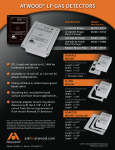
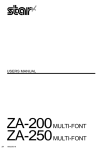
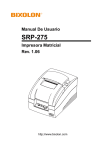
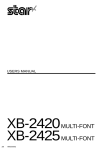
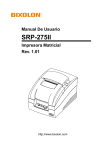
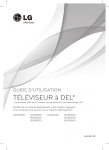

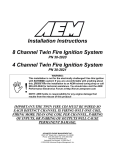
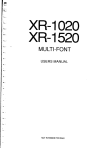

![AGIVEN PROGRAM ]](http://vs1.manualzilla.com/store/data/005708142_1-ae1c6d6b32e7a9016e2dede042b38772-150x150.png)
